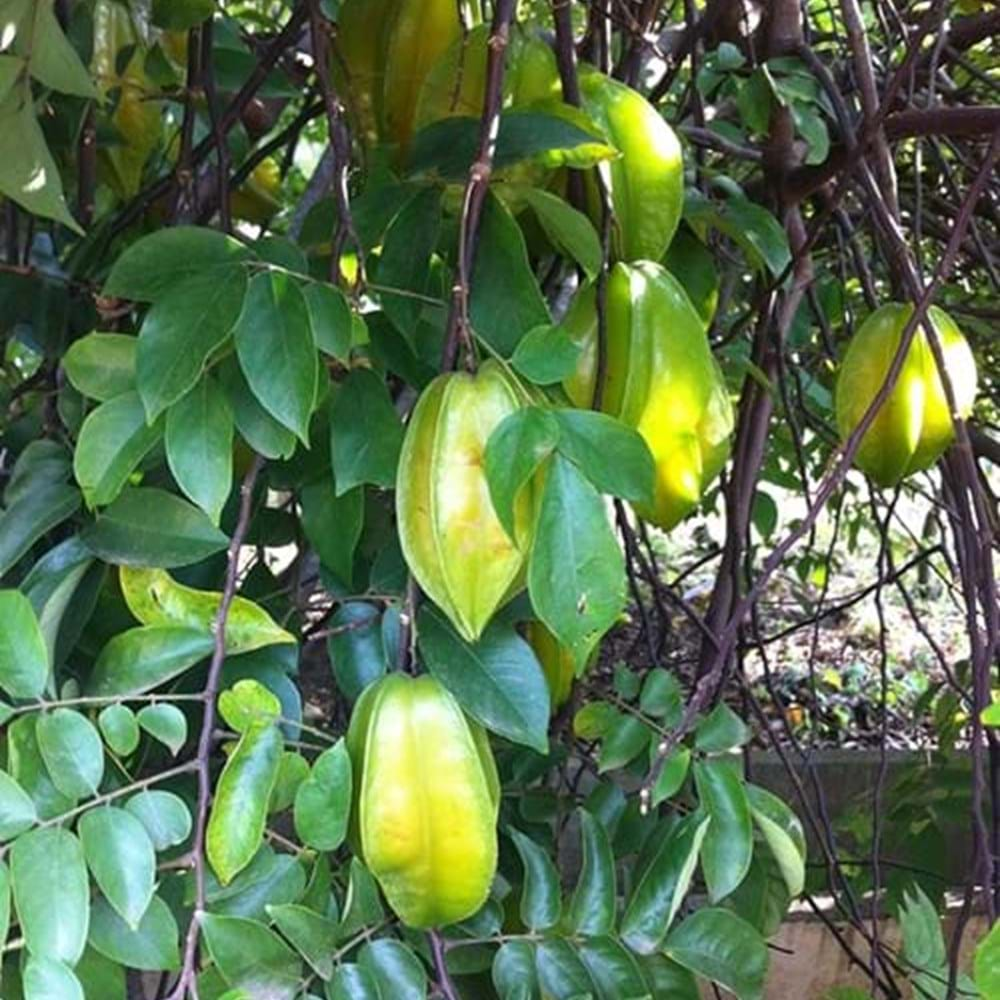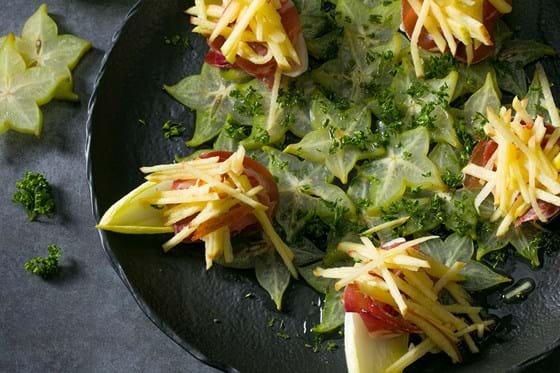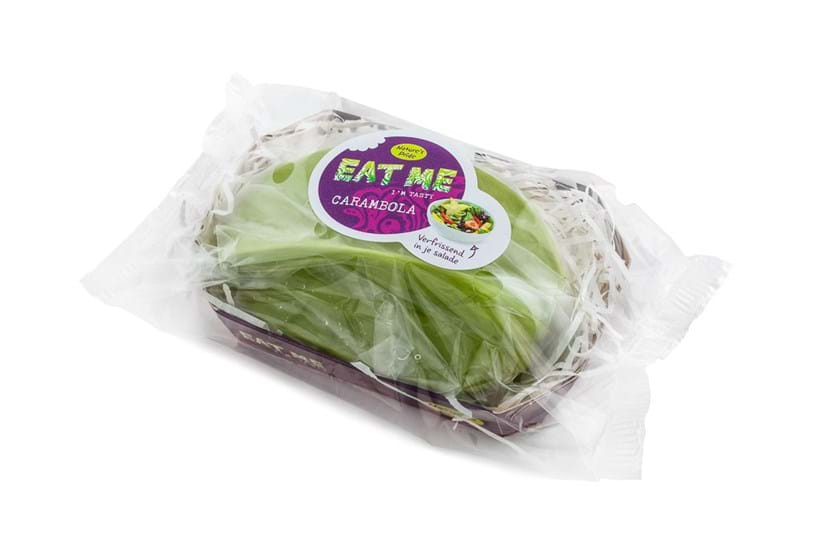Carambola
The star of the fruit bowl!
- Directly to...
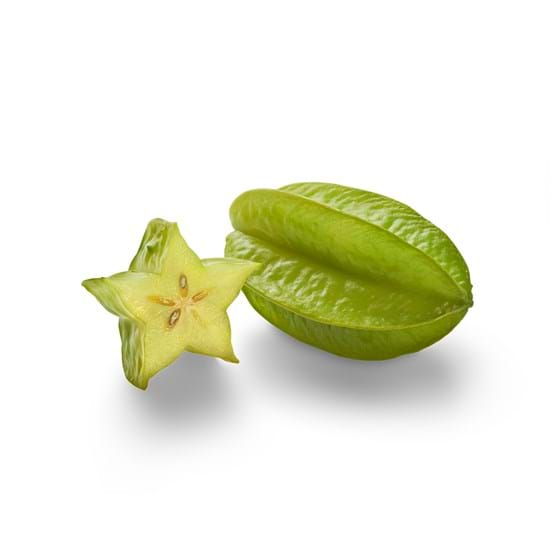
One thing you can't fail to notice about the carambola: it is star shaped. Which accounts for its other name of star fruit. And it's a star anyway thanks to its lovely taste. The green to yellow skin hides a colourless, transparent flesh that is bursting with flavour: deliciously fresh and mildly sweet. The skin is edible.
At EAT ME we know exactly where you can find the best carambolas: in Malaysia. They are larger than varieties grown elsewhere in the world. When you see carambola in your local shop, don't worry about the sour aroma. The fruit will continue to ripen naturally in the fruit bowl.
Recipes with carambola
Of course, the distinctive star shape invites you to use the fruit as a decoration. But that does not do credit to the other charms of the carambola. Use the decorative slices to jazz up a fruit skewer, along with other exotic fruit. And bring a touch of star quality to a salad with the addition of carambola! Or use it as a delightful taste maker in a cocktail.
Preparation
Carambola can be eaten whole, but rinse the fruit well first. It is surrounded by a waxy layer that can dominate the subtle flavour. Then cut the fruit into slices to create the star shape. The fruit retains its flavour even when baked.
How to use carambola in the kitchen?
- Grill
- In salads
- As a snack
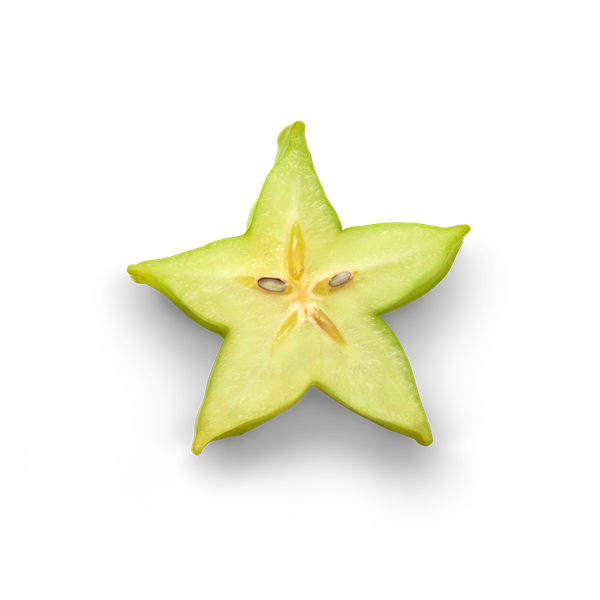

Storage advice
Do you want to keep your carambolas slightly longer than the day of purchase? In that case, it's best to store them in the fridge.
Nutritional values per 100 grams
Carambola, with the C of... vitamin C! Like many other tropical fruits, the carambola is rich in this essential vitamin. For example for everyone who is still in school or studying: vitamin C is good for your ability to concentrate, so it improves your learning performance.
Where do carambolas come from?
EAT ME sources the best fruits from Malaysia and China. The trees guarantee many decades of fruit production. The carambola tree has a very specific and easily recognisable shape, with a short trunk and bushy, drooping branches. Growers have to protect the fruit hanging on the tree from insects. They do this by wrapping each fruit in paper by hand. Each tree yields lot of fruit, but each harvest is different: sometimes a heavy crop, another season less fruit.
